Technologies
What is Micro-OLED? Apple Vision Pro’s Screen Tech Explained
The microscopic version of the beloved display tech winds up the pixels per inch to insane levels. Here’s why Apple and others are so excited about this new version of OLED.
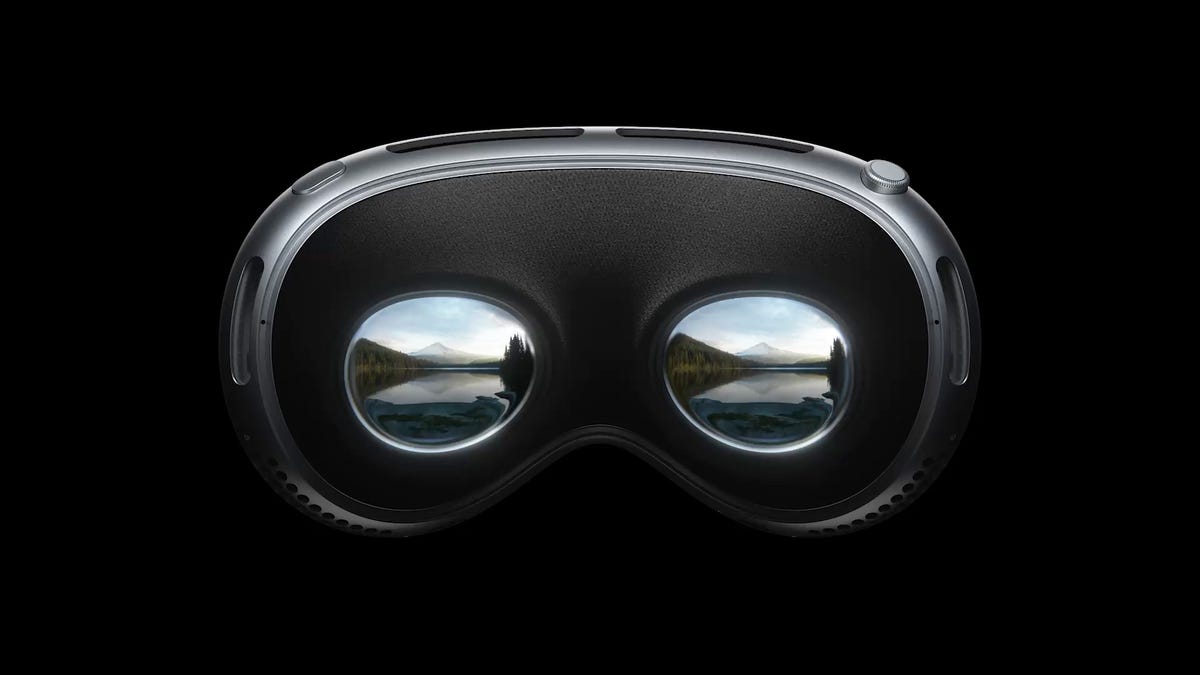
At WWDC 2023, Apple announced the Vision Pro AR/VR headset, which offered an impressive amount of technology and an equally imposing $3,500 price tag. Yet, one of the things that helps the Vision stand out from cheaper products from Valve and Meta is the use of a new type of display called micro-OLED. More than just a rebranding by the marketing experts at Apple, micro-OLED is a variation on the screen technology which has become a staple of best TV lists over the last few years.
Micro-OLED’s main difference from «traditional» OLED is right in the name. Featuring far smaller pixels, micro-OLED has the potential for much, much higher resolutions than traditional OLED: think 4K TV resolutions on chips the size of postage stamps. Until recently, the technology has been used in things like electronic viewfinders in cameras, but the latest versions are larger and even higher resolution, making them perfect for AR and VR headsets.
Here’s an in-depth look at this tech and where it could be used in the future.
What’s OLED?
OLED stands for Organic Light Emitting Diode. The term «organic» means the chemicals that help the OLED create light incorporate the element carbon. The specific chemicals beyond that don’t matter much, at least to us end-users, but suffice it to say when they’re supplied with a bit of energy, they create light. You can read more about how OLED works in What is OLED and what can it do for your TV?.
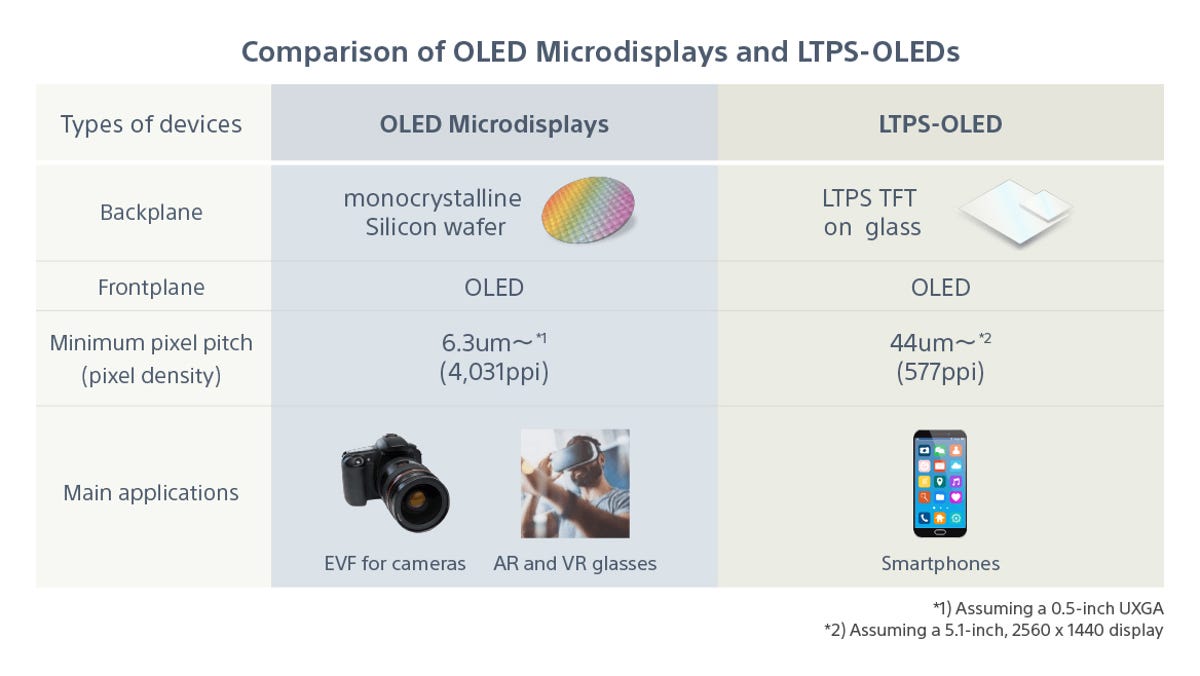
The basic differences between micro-OLED and «traditional» OLED.
The benefit of OLED in general is that it creates its own light. So unlike LED LCD TVs, which currently make up the rest of the TV market, each pixel can be turned on and off. When off, they emit no light. You can’t make an LED LCD pixel totally dark unless you turn off the backlight altogether, and this means OLED’s contrast ratio, or the difference between the brightest and darkest part of an image, is basically infinite in comparison.
OLED TVs, almost all manufactured by LG, have been on the market for several years. Meanwhile, Samsung Display has recently introduced OLED TVs that also feature quantum dots (QD-OLED), which offer even higher brightness and potentially greater color. These QD-OLEDs are sold by Samsung, Sony, and, in computer monitor form, Alienware.
Micro-OLED aka OLED on Silicon

The layers of a micro-OLED display.
Micro-OLED, also known as OLEDoS and OLED microdisplays, is one of the rare cases where the tech is exactly as it sounds: tiny OLED «micro» displays. In this case, not only are the pixels themselves smaller, but the entire «panels» are smaller. This is possible thanks to advancements in manufacturing, including mounting the display-making segments in each pixel directly to a silicone chip. This enables pixels to be much, much smaller .

Two Sony micro-OLED displays. They look like computer chips because that’s what they’re based on.
If we take a look at Apple’s claims, we can estimate how small these pixels really are. Firstly, Apple says the twin displays in the Vision Pro include «More pixels than a 4K TV. For each eye» or «23 million pixels.» A 4K TV is 3,840×2,160, or 8,294,400 pixels, so that should equate to around 11,500,000 pixels per eye for the Apple screens.
Next, Apple partnered with Sony (or maybe TSMC) to create these micro-OLED displays and they are approximately 1-inch in size. To calculate the size of each pixel I’m going to use 32-inch 4K TVs as a comparison, and these boast about 138 pixels per inch (ppi). We don’t know the aspect ratio of the chips in the Vision Pro, but if they’re a square 3,400×3,400 resolution that would be a total of 11,560,000 pixels, so that’s a safe bet. So, if that’s the case, these displays have a ppi of around 4,808(!) and that’s more than almost anything else on the market, and that’s by a lot. Even the high-resolution OLED screen on the Galaxy S23 Ultra has a ppi of «only» 500. Regardless of the panel’s production aspect ratio, the ppi is going to be impressive. Apple didn’t respond immediately to CNET’s request for clarification.
AR and VR microdisplays are so close to your eyes that they need to be extremely high performance in order to be realistic. They need extreme resolution so you don’t see the pixels, they need high contrast ratios so they look realistic, and they need high framerates to minimize the chance of motion blur and motion sickness. In addition, being in portable devices means they need to be able to do all that with low power consumption. Micro-OLED seems able to do all of these, but at a cost. Literally a cost. The Vision Pro is the most high-profile use of the high-end of the technology and it costs $3,500.
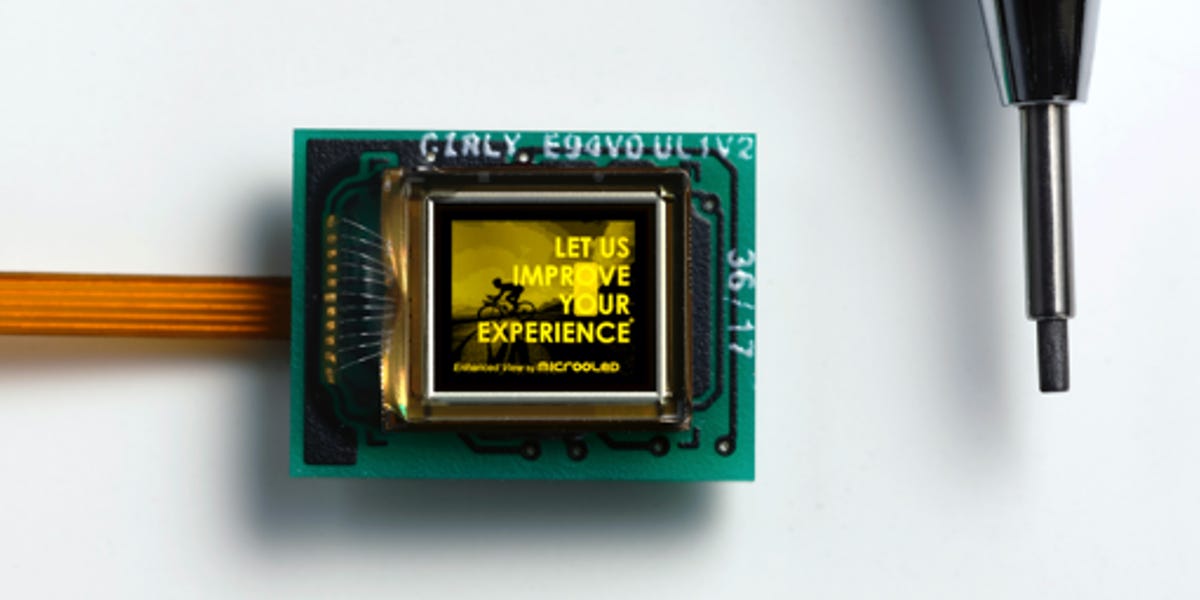
A monochrome micro-OLED display from the company Microoled, one of the largest manufactures of micro-OLED displays. On the right is the tip of a mechanical pencil.
The Micro-OLED technology isn’t particularly new, having been available in some form for over a decade. Sony has been using them in camera viewfinders for several years, as have Canon and Nikon. Like all display techs, however, micro-OLED has evolved quite a bit over the years. The displays in the Vision Pro, for instance, are huge and very high resolution for a micro-OLED display.

A high-resolution color micro-OLED display by the company Microoled.
How is micro-OLED different from MicroLED? Despite the fact that they’re written slightly differently, they are superficially similar in the way they are both self-emitting, or can make their own light. But on a more in-depth level, the differences between the carbon-based OLED and the non-carbon LED are sadly beyond the scope of this article. Suffice it to say right now, MicroLED is better suited for large, wall-sized displays using individual pixels made up of LEDs. Micro-OLED is better suited for tiny, high-resolution displays. This isn’t to say that MicroLED can’t be used in smaller displays, and we’ll likely see some eventually. But for now they’re different tools for different uses.
The future is micro?
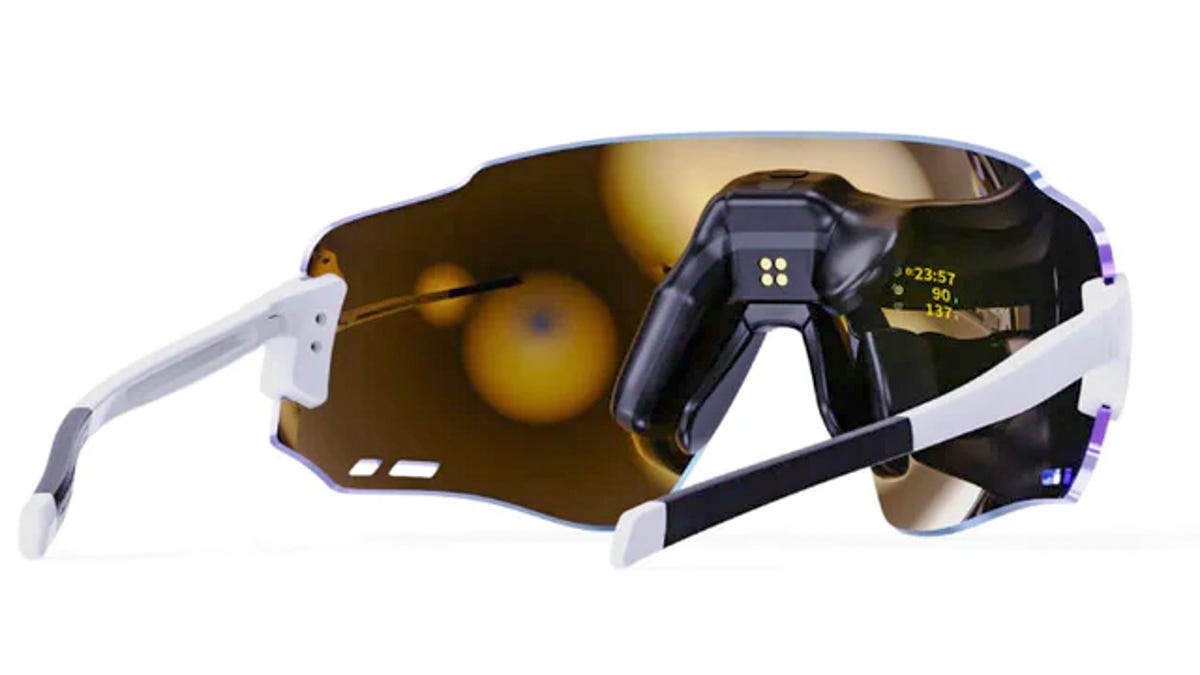
The ENGO 2 eyeware uses a tiny micro-OLED made by the company Microoled. The display reflects off the inside of the eyeware to show you your speed, time, direction and other data. Basically anything an athlete would need for better training, but instead of on a watch or phone, it’s projected in real time in front of you. Essentially, a heads-up display built into sunglasses.
Where else will we see micro-OLED? At MWC 2023, Xiaomi announced its AR Glass Discovery Edition featured the technology, and future high-end VR headsets from Meta, HTC and others will likely use it. Currently, a company named Engo is using a tiny micro-OLED projector to display speed and other data on the inside of its AR sunglasses. I know I sure don’t need these, but I want them. Then there’s the many mirrorless and other cameras that have been using micro-OLED viewfinders for years.
Could we see ultra-ultra-ultra high-resolution TVs with this new technology? Technically, it’s possible but highly unlikely. Macro micro-OLED is just OLED. The resolutions possible using more traditional OLED manufacturing are more than enough for a display that’s 10 feet from your eyeballs. However, it’s possible micro-OLED might find its way into wearables and other portable devices where its size, resolution and efficiency will be an asset. That’s likely why LG, Samsung Display, Sony and others are all working on micro-OLED.
Will ultra-thin, ultra-high resolution micro-OLED displays compete in a market with ultra-thin, ultra-high resolution nanoLED? Could be. We shall see.
As well as covering TV and other display tech, Geoff does photo tours of cool museums and locations around the world, including nuclear submarines, massive aircraft carriers, medieval castles, epic 10,000-mile road trips and more. Check out Tech Treks for all his tours and adventures.
He wrote a bestselling sci-fi novel about city-size submarines and a sequel. You can follow his adventures on Instagram and his YouTube channel.
Technologies
Today’s NYT Strands Hints, Answers and Help for Jan. 5 #673
Here are hints and answers for the NYT Strands puzzle for Jan. 5, No. 673.

Looking for the most recent Strands answer? Click here for our daily Strands hints, as well as our daily answers and hints for The New York Times Mini Crossword, Wordle, Connections and Connections: Sports Edition puzzles.
Today’s NYT Strands puzzle could be a challenge. Some of the answers are difficult to unscramble, so if you need hints and answers, read on.
I go into depth about the rules for Strands in this story.
If you’re looking for today’s Wordle, Connections and Mini Crossword answers, you can visit CNET’s NYT puzzle hints page.
Read more: NYT Connections Turns 1: These Are the 5 Toughest Puzzles So Far
Hint for today’s Strands puzzle
Today’s Strands theme is: Slapped together
If that doesn’t help you, here’s a clue: When you don’t take your time.
Clue words to unlock in-game hints
Your goal is to find hidden words that fit the puzzle’s theme. If you’re stuck, find any words you can. Every time you find three words of four letters or more, Strands will reveal one of the theme words. These are the words I used to get those hints but any words of four or more letters that you find will work:
- SKIT, SWIPE, SWIPES, DIPS, SIPS, DIRT, GRAND, SPEED, QUICK
Answers for today’s Strands puzzle
These are the answers that tie into the theme. The goal of the puzzle is to find them all, including the spangram, a theme word that reaches from one side of the puzzle to the other. When you have all of them (I originally thought there were always eight but learned that the number can vary), every letter on the board will be used. Here are the nonspangram answers:
- BRISK, SWIFT, SPEEDY, FILTHY, GRUBBY, STAINED
Today’s Strands spangram
Today’s Strands spangram is QUICKANDDIRTY. To find it, start with the Q that’s three letters down on the farthest right row, and wind backwards and down.
Don’t miss any of our unbiased tech content and lab-based reviews. Add CNET as a preferred Google source.
Technologies
Today’s NYT Connections Hints, Answers and Help for Jan. 5, #939
Here are some hints and the answers for the NYT Connections puzzle for Jan. 5 #939.
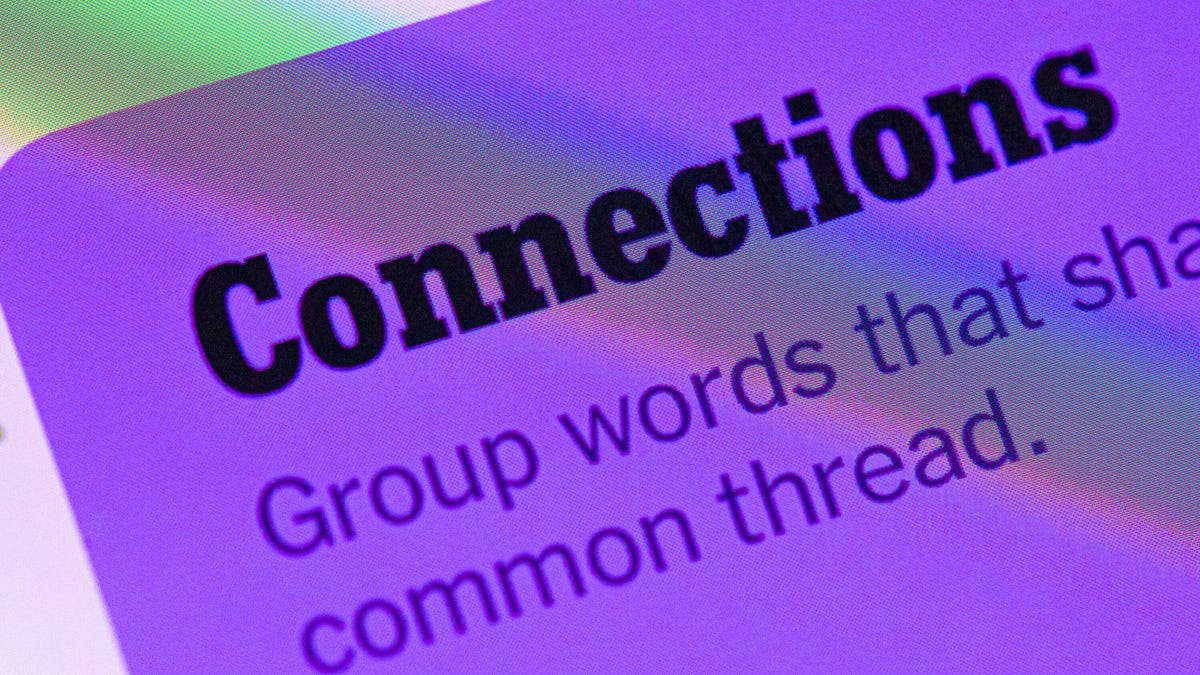
Looking for the most recent Connections answers? Click here for today’s Connections hints, as well as our daily answers and hints for The New York Times Mini Crossword, Wordle, Connections: Sports Edition and Strands puzzles.
Today’s NYT Connections puzzle has a tough purple category, to no one’s surprise. Read on for clues and today’s Connections answers.
The Times has a Connections Bot, like the one for Wordle. Go there after you play to receive a numeric score and to have the program analyze your answers. Players who are registered with the Times Games section can now nerd out by following their progress, including the number of puzzles completed, win rate, number of times they nabbed a perfect score and their win streak.
Read more: Hints, Tips and Strategies to Help You Win at NYT Connections Every Time
Hints for today’s Connections groups
Here are four hints for the groupings in today’s Connections puzzle, ranked from the easiest yellow group to the tough (and sometimes bizarre) purple group.
Yellow group hint: Facebook tasks.
Green group hint: Way far away.
Blue group hint: Think museum displays.
Purple group hint: Letter near the end of the alphabet.
Answers for today’s Connections groups
Yellow group: Things you can do on social media.
Green group: Furthest point.
Blue group: Art movements, with «ism.»
Purple group: What «V» might mean.
Read more: Wordle Cheat Sheet: Here Are the Most Popular Letters Used in English Words
What are today’s Connections answers?
The yellow words in today’s Connections
The theme is things you can do on social media. The four answers are comment, like, lurk and post.
The green words in today’s Connections
The theme is furthest point. The four answers are end, extreme, opposite and pole.
The blue words in today’s Connections
The theme is art movements, with «ism.» The four answers are brutal, impression, manner and real.
The purple words in today’s Connections
The theme is what «V» might mean. The four answers are five, versus, very and volt.
Don’t miss any of our unbiased tech content and lab-based reviews. Add CNET as a preferred Google source.
Technologies
My CES 2026 Secret Weapon? This New Wearable AI Note-Taking Pin From Plaud
During a week of information overload, I’m outsourcing my memory to the Plaud NotePin S.
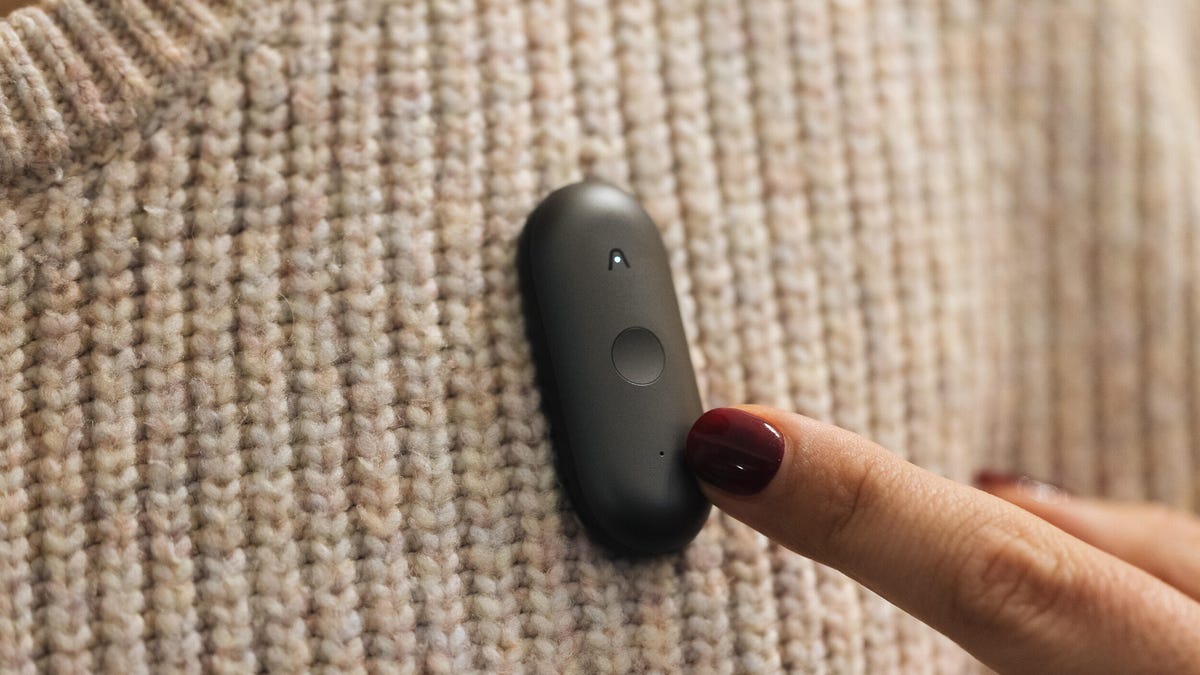
CES is always one of the most hectic weeks of the year for CNET journalists — myself included. I’ll be jumping between booths, often speaking to multiple different companies within the span of an hour, having interesting and intense conversations about different products as I go.
Sometimes these conversations begin before I’ve even had a chance to pull my recorder from my bag, never mind switch it on. Often I end up scribbling down extra details or quotes in my notepad — a fun challenge for my memory and eyes when the time comes to sit down and write and I’m forced to decipher my own handwriting.
Not this year, though. At CES 2026, AI note-taking company Plaud is launching its new NotePin S, an AI wearable that can clip to your collar, strap onto your wrist, hang around your neck or cling to your shirt with a magnet and record your conversations as you go about your day.
Plaud sent me this updated version of the NotePin ahead of CES, so I’ll be able to test it out as I wander the show floors. Just as with the previous version of the pin and the Plaud Note Pro, which the company announced back in August, the NotePin S connects to your phone via Bluetooth, and transcriptions of your conversations will appear in the Plaud app.
I already expect the NotePin S, which is a sleek pill-shaped device that’s smaller than a USB stick, to be a game changer for me as I roam the halls of CES. In a briefing ahead of the show, Plaud said that the pin had been successfully tested out at the Dreamforce conference earlier this year, so I know the dual microphones, which have a range of around 9.8 feet, are capable of working well in a noisy convention center.
To activate the recording, all I’ll need to do is long press on the front of the pin. But the feature I’m most looking forward to testing out is the press to highlight button on the pin, which will allow me to mark key moments in conversations so they’ll be easy to find when I come to look through my transcriptions later.
I’m also glad that, thanks to the range of the wearable accessories bundled with the NotePin S, the device will work with a variety of different outfits. In such a busy environment, I might be tempted to use the lanyard to carry it around my neck, but on the days I’m wearing a jacket, the lapel clip might be more suitable. For sit-down interviews, I’m tempted to switch to wristband so that I can press to highlight with the least amount of intrusion into the conversation.
For when I’m back home, conducting interviews from the comfort of my office, Plaud has another new toy for me to play with. At CES the company also announced Plaud Desktop — an AI notetaker designed to bridge in-person and online meetings by capturing your conversations natively.
This means no intrusive meeting bots joining your call. (If you know, you know.) Instead, it will sit on your computer and detect when a meeting is taking place, record that meeting discreetly and then provide a context-rich summary within your Plaud account.
The most appealing part of this for me is the idea that all of my notes, meetings and conversations — whether captured by my wearable or my computer — will be accessible and organized in one place.
Both the NotePin S and Plaud Desktop will be available immediately, with the pin costing $179 (£159).
-

 Technologies3 года ago
Technologies3 года agoTech Companies Need to Be Held Accountable for Security, Experts Say
-

 Technologies3 года ago
Technologies3 года agoBest Handheld Game Console in 2023
-

 Technologies3 года ago
Technologies3 года agoTighten Up Your VR Game With the Best Head Straps for Quest 2
-

 Technologies4 года ago
Technologies4 года agoBlack Friday 2021: The best deals on TVs, headphones, kitchenware, and more
-

 Technologies4 года ago
Technologies4 года agoVerum, Wickr and Threema: next generation secured messengers
-

 Technologies4 года ago
Technologies4 года agoGoogle to require vaccinations as Silicon Valley rethinks return-to-office policies
-

 Technologies4 года ago
Technologies4 года agoOlivia Harlan Dekker for Verum Messenger
-

 Technologies4 года ago
Technologies4 года agoiPhone 13 event: How to watch Apple’s big announcement tomorrow
